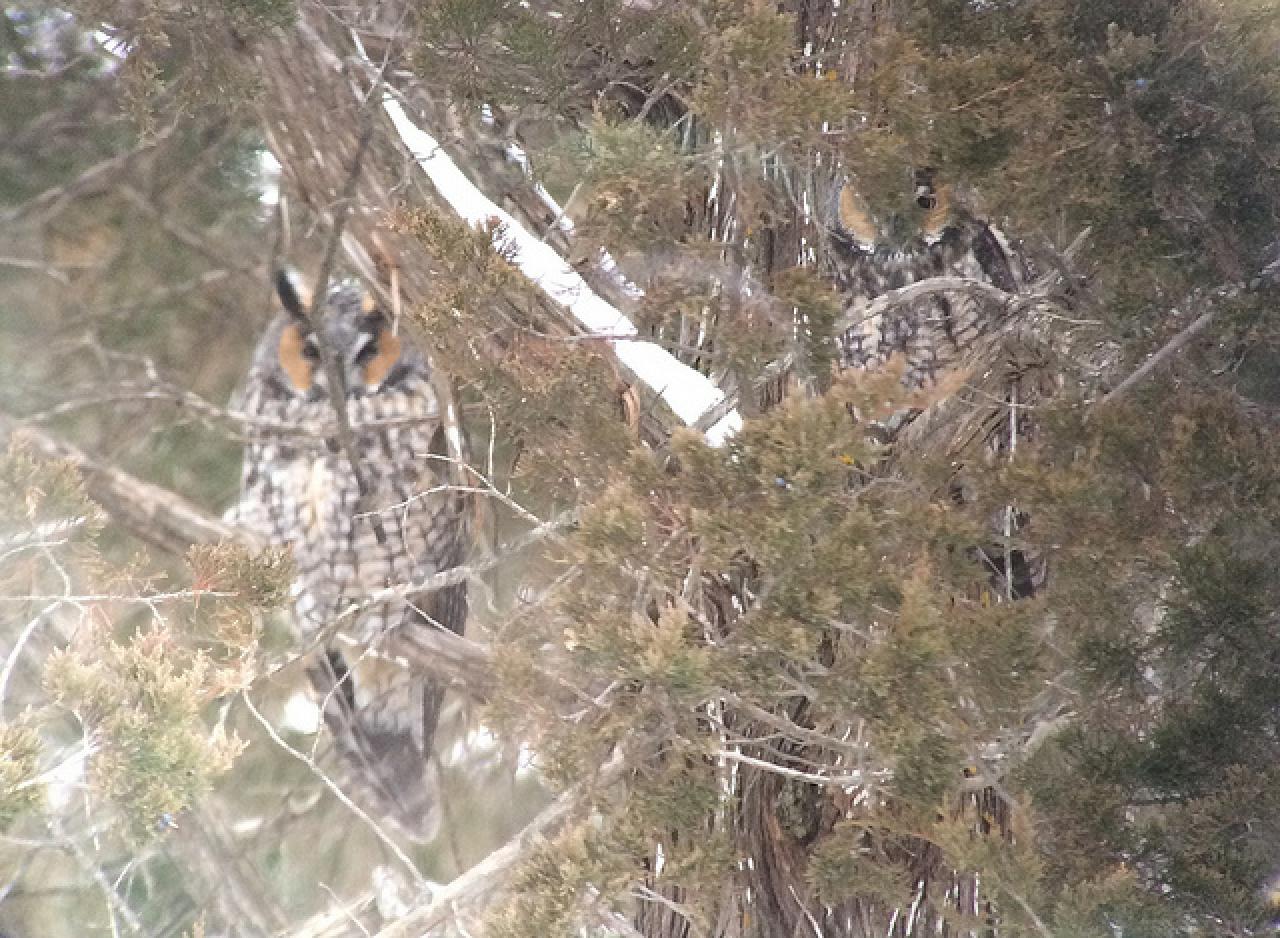Midwestern winters bring owls together

Most owls are solitary creatures, however some Midwestern species do in fact roost communally, such as the closely related long-eared (Asio otis) and short-eared (Asio flammeus) owls.
Nocturnal long-eareds nest and roost in forested areas. In winter, they can gather in groups of up to 100 in evergreen stands, each individual nestled close to the tree trunk. Their short-eared relatives, however, prefer more open habitat, such as marshes, grasslands and swamps. Listed as a Species of Special Concern in Minnesota, short-eareds are ground-nesting birds. Their communal roosts tend to be more visible as the owls venture forth over open areas at dusk in search of food.
Why do these birds roost in groups? Research suggests that this behavior helps them keep warm (i.e. thermoregulate) and offers some protection from predators.
If you are lucky enough to encounter roosting owls, we know they're quite the sight but please respect the roost and keep your distance. If startled or scared into flight, these owls lose the protections and warmth that bring them together in the first place.
Sources:
Minnesota Department of Natural Resources Rare Species Guide: Short-eared owls
'Winter Roost Habitat and Diet of Short-eared Owls (Asei flammeus) in Door County, Wisconsin'
Minnesota Department of Natural Resources profile: Long-eared owls (Asio otis)